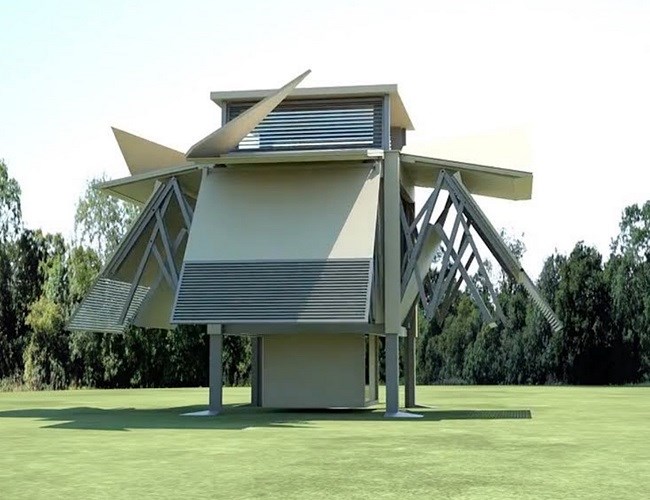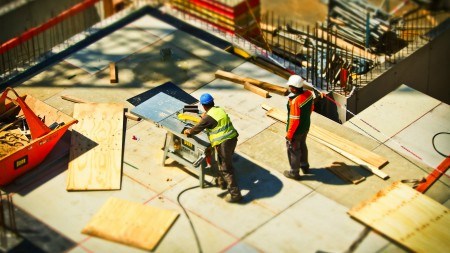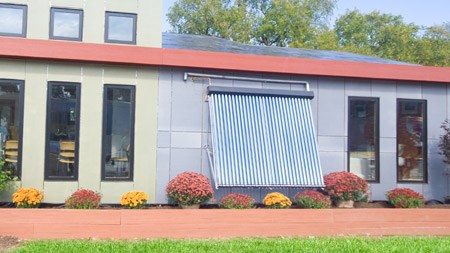Developers using conventional building methods are struggling to keep pace with demand for new homes, but innovative new techniques could catapult the industry into the 21st century.
In recent years the property development and construction industries have been criticised for being slow to respond to the demand for a different kind of residential accommodation – homes that tick all the boxes on most millennial buyers’ wish lists and also address current and future challenges.
However, South Africa is working to catch up with global trends and broaden its “cutting edge” from purely aesthetic with a small amount of green thrown in, to an all-embracing philosophy that’ll appeal to the next generation of buyers.
Sandy Geffen, Executive Director of Lew Geffen Sotheby’s International Realty in South Africa, says: “A number of key factors have underpinned the strident advances we are seeing in the industry, most notably the ever-growing demand for homes due to burgeoning urban populations and increased life expectancy and the critical need to exponentially reduce our carbon footprint before it’s too late.
“The two main impediments to meeting demand in urban areas are the dwindling lack of available land which has precipitated rampant densification and, especially in sought-after suburbs, the fact that the traditional building method is a lengthy and laborious process. “However, the latest advancements in construction techniques like pre-fabrication are significantly reducing construction time, although nowhere near the astonishing speed realised by the two most cutting-edge developments.
“Ten Fold Engineering in the UK recently developed and launched a range of self-deploying modular homes which unfold in under 10 minutes - without the need for builders, cranes or even foundations. And, taking a little longer are the more economical 3D printed houses that are habitable within 24 hours can provide cheap, quick housing for millions with the first community of these homes being built in El Salvador later this year.”
 Modular homes which can be put up in minutes offer a viable solution to the growing housing crisis
Modular homes which can be put up in minutes offer a viable solution to the growing housing crisis
3D-printing technology
Geffen adds that 3D-printing technology also offers significant environmental benefits as it’s managed digitally from the design to the production, generating no waste with notable savings on the cost of materials due to the precision of optimized shapes. There have been myriad advances in green building in recent years and while some are revolutionary high-tech concepts, others are clever modifications of old practices.
“Over the years, wood has increasingly been relegated to finishes in the home rather than used in its construction, but new innovations are making it a viable material once again,” says Geffen.
“Researchers in the States are combining new super-strong plywood, with precision digital CNC manufacturing processes to build timber structures that will soon hold their own against conventional brick-and-mortar buildings. It’s also a lot more environmentally friendly as conventional construction generally requires a large amount of steel, clay bricks, cement, and aluminum.”
Solar building design - Trombe Wall
In Sweden, researchers have revised an even older practice for larger constructions – a 19th-century solar building design called Trombe Wall which they have adapted to passively heat and cool the interior without producing carbon emissions.
The “wall”, which covers the length of the winter sun side of a building, comprises a glass external layer and a high heat capacity internal layer separated by a layer of air which serves to heat the entire building in cold months and keep it cool in summer.
The new design, unveiled by researchers earlier this year, utilises renewable wind and solar energy which drastically reduces the total energy consumption and carbon emissions of large building. Another high-tech innovation set to move into the mainstream market will also have considerable benefits for property owners – the convenience and cost effectiveness of little or no maintenance. When applied to a range of surfaces from wood to metal, nanoparticle paint creates extremely robust and hardwearing self-cleaning surfaces and, depending on the nanoparticles used, it also offers a number of new functionalities including UV-protection, antimicrobial resistance, scratch resistance and water or dirt repellence.
What could happen in the future?
Geffen concludes: “It is estimated that by 2050, two-thirds of the global population will live in cities with a severe dearth of undeveloped ground space in most urban centres restricting further development to building upwards rather than outwards. During the last decade we have already seen a perceptible move towards smaller homes and densification and the growing number of challenges created by pervasive urbanisation. “But if the strident technological advances we are now seeing in the industry continue to evolve at their pace, many of these challenges can be overcome, particularly through ongoing innovation in sustainable building and green technologies. These concepts are not only improving the functionality of homes for residents, but the flexibility and speed of construction offered by modular homes are already proving effective solutions to a number of issues.



